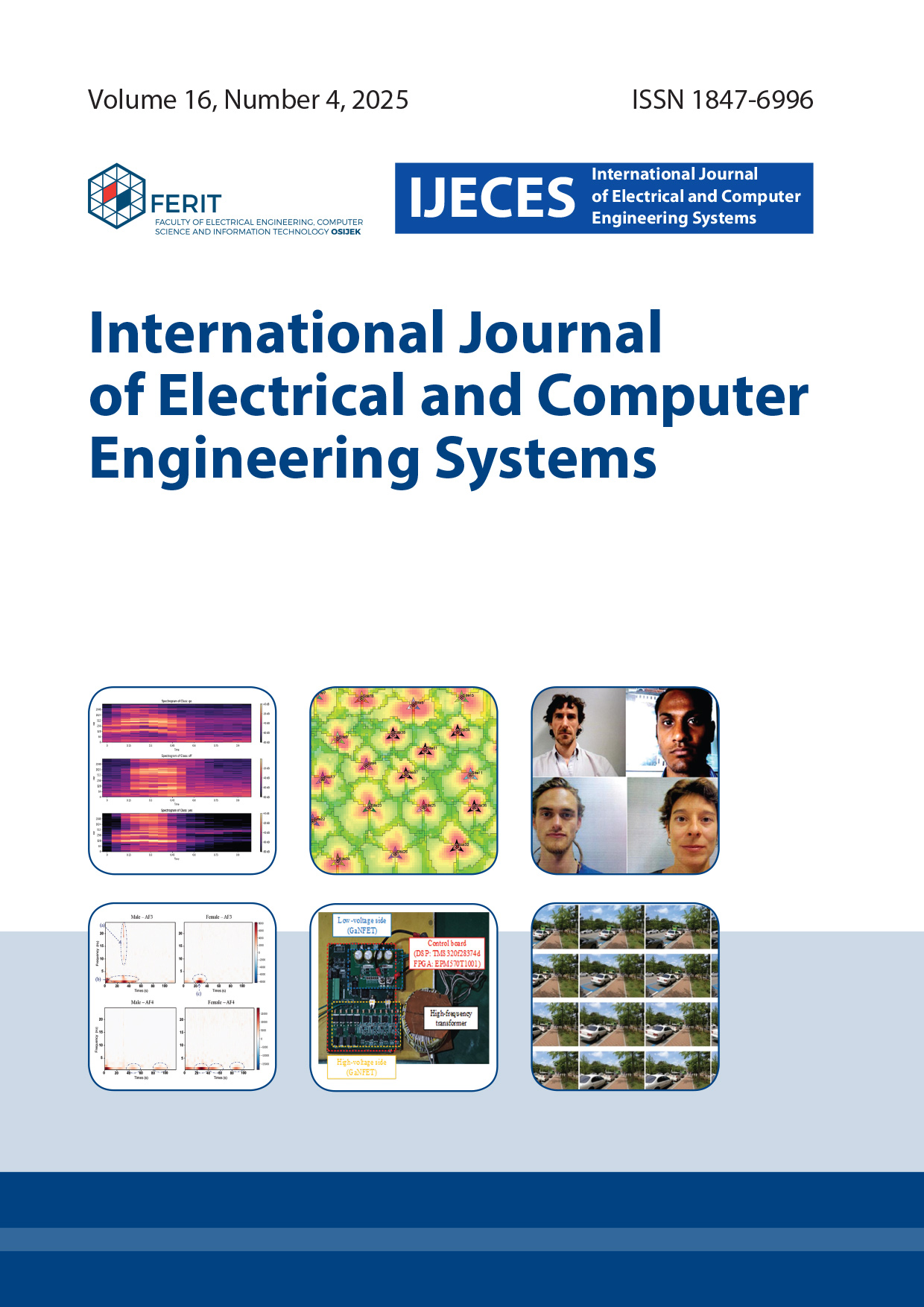Sensorless Generalized Average Modeling- Based Control for the Resonant LC-DAB Converter
DOI:
https://doi.org/10.32985/ijeces.16.4.1Keywords:
Dual active bridge, resonant DC-DC converter, generalized average modelling, sensorless controlAbstract
The dual active bridge (DAB) converter is an efficient power conversion topology designed for applications that require bidirectional galvanic isolation and energy transfer. Among its various configurations, the resonant LC-DAB converter is notable for its ability to significantly reduce switching losses and enhance efficiency. While discrete-time control methodologies are widely employed for design and analysis of DAB converters, it is challenging to ensure performance stability during steady-state and transient operating modes. Furthermore, high-frequency and single point measurement of resonant LC-DAB possess challenge, as it may not reflect the behavior of resonant inductor current. To address these issues, a generalized average modeling-based approach is proposed, which minimizes output-side circulating current. This is achieved by aligning the output current with the secondary side converter's voltage. The proposed model eliminates the need for a current sensor and demonstrates low sensitivity during transient conditions. A two-stage control loop is utilized: an inner loop for current control and an outer loop with a PI controller for voltage control. The analysis and design procedure for the proposed control is detailed, followed by simulation and experimental results in order to demonstrate the effectiveness of the proposed method.
Downloads
Published
How to Cite
Issue
Section
License
Copyright (c) 2025 International Journal of Electrical and Computer Engineering Systems

This work is licensed under a Creative Commons Attribution-NonCommercial-NoDerivatives 4.0 International License.


